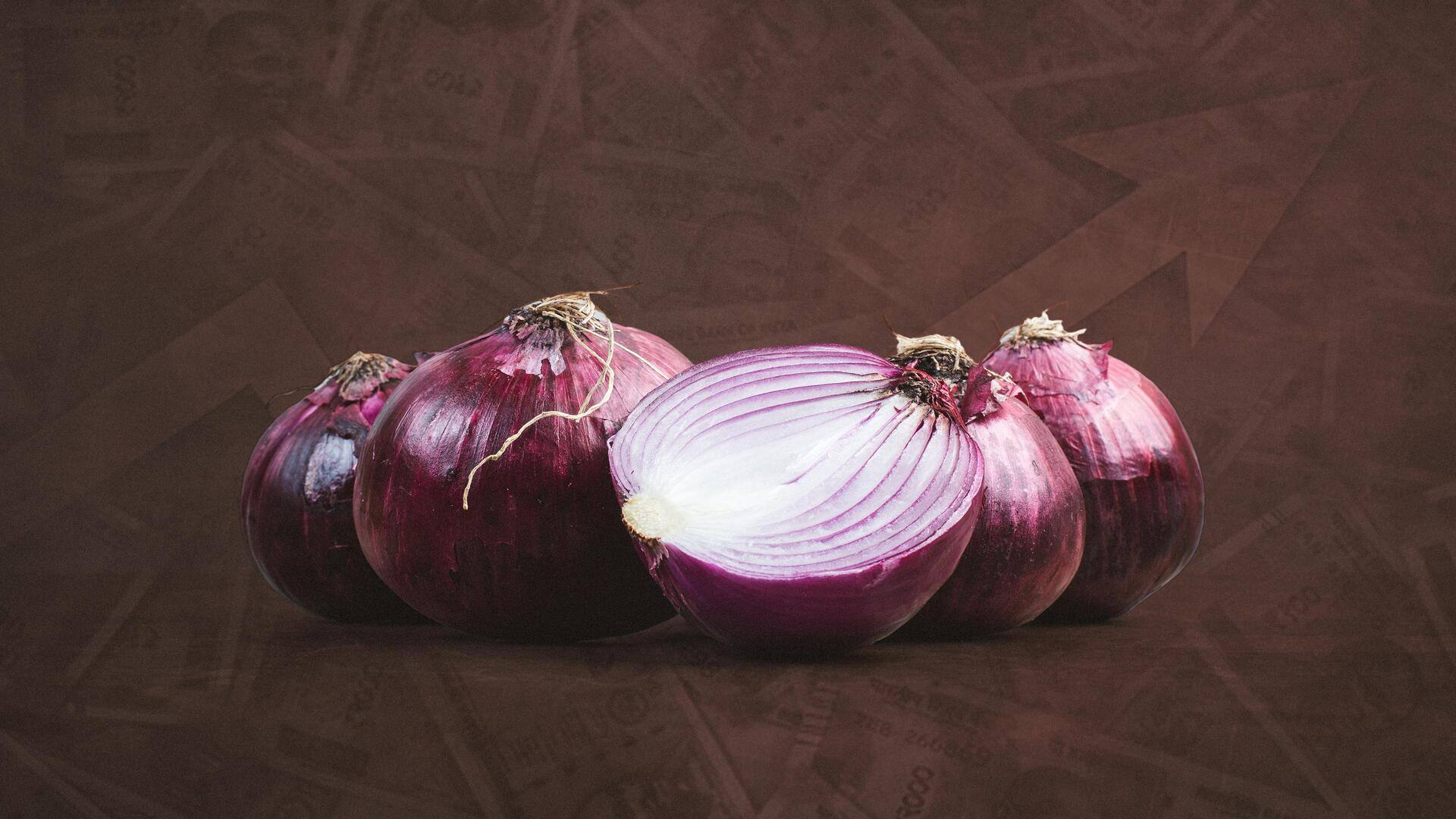
After tomato, onion prices likely to hurt pockets
What's the story
Indian households are likely to feel the pressure of an inflationary spell as onion prices are soaring due to tightening supplies. Onion prices have shot up by 28% in a month, The Hindu Business Line reported. Heavy rains over the last months have damaged stored onions, thus decreasing supply. August and September are usually lean months, and the next harvest will be in October.
Context
Why does this story matter?
This raises worries as tomato prices have already gone through the roof, retailing for over Rs. 200 per kg in most cities. Tomato, onion, and potato—collectively called TOP—significantly influence the Consumer Price Index (CPI), based on which inflation is measured. The Reserve Bank of India (RBI)'s Developmental Research Group (DRG) recently found that the price rise of tomatoes is transmitted to onions and potatoes.
Stock
Government has 2.5 lakh tons of onion reserve
Onions have a comparatively longer shelf life than tomatoes or most vegetables. The government maintains a reserve of around 2.5 lakh tons of onions, which are released to the market as supplies bottom out. "We have enough stocks to intervene in the market and there is no concern," an official said, adding that the government is monitoring the demand and supply of onions.
Details
Prices have remained stable for last 4 months
Reportedly, onion prices have remained stable for the last four months, and modal retail prices have hovered around Rs. 25 per kg. The winter crop caters to 70% of the annual demand; however, this year's crop wasn't as good as last year. While onion is imported in case of low production, there were no onion imports in 2021-22 and 2022-23.
Quote
Acreage under rabi saw 3.5% decline
Crisil Market Intelligence and Analytics economist Pushan Sharma said the acreage under rabi or winter-sown crops (December 2022-January 2023) is estimated to have been lower by 3.5%, led by 25-27% lower realization by farmers in the previous season.
Prices
Rabi stocks likely to deplete by August-end
Notably, high temperatures in February resulted in the onion crops maturing quickly, which in turn reduced their shelf life. Coupled with panic selling in February-March, the rabi stocks are expected to deplete by August-end, following which tight supplies will shoot up the prices. The DRG study says that the price hike could spill over to potatoes, worsening price volatility and inflation.